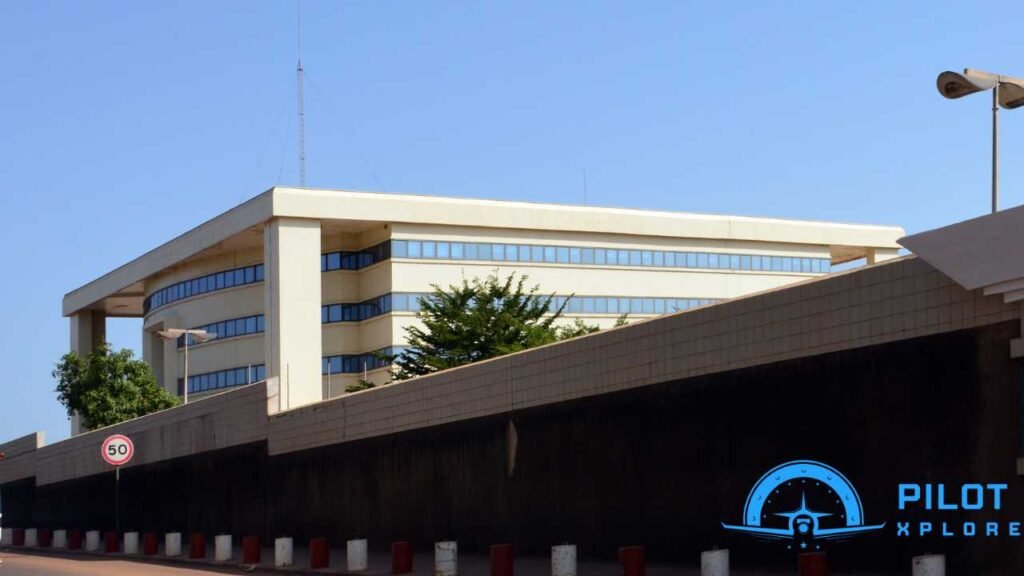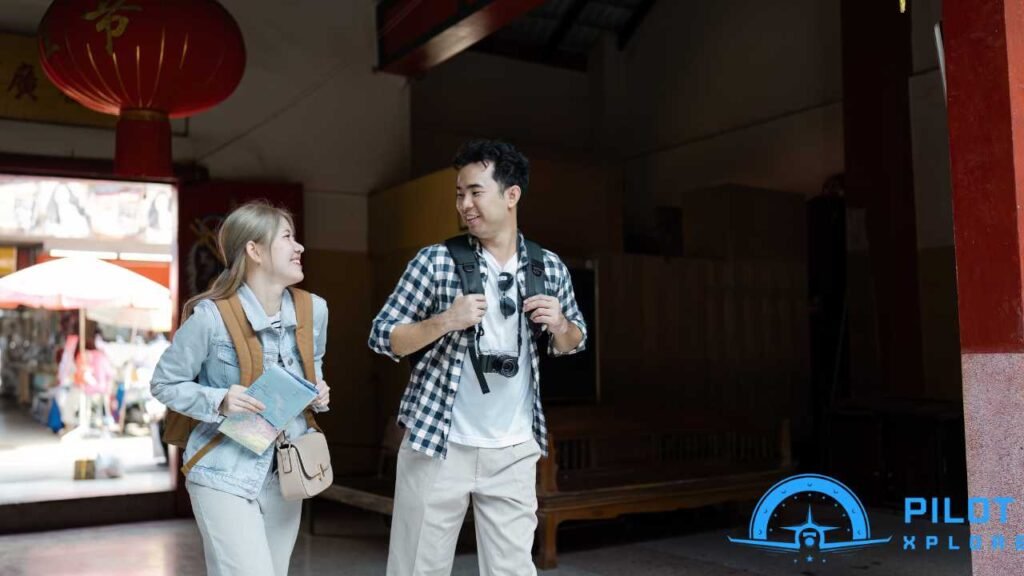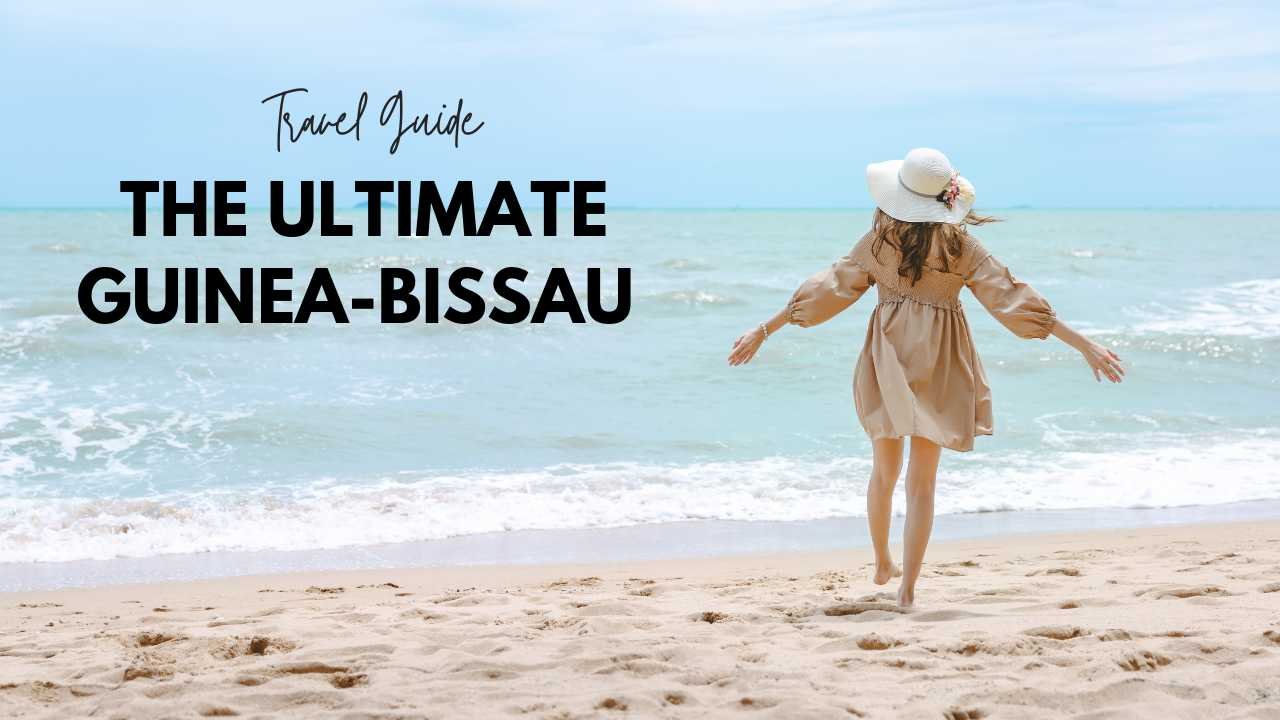When you think of West Africa, there’s one place that stands out with its unique vibrancy and stunning color — Guinea-Bissau. This destination is a favorite among travelers who want to experience something off the beaten path.
With its secluded Atlantic islands like Bijagos and Bubaque, this ex-Portuguese colony offers a blend of fascinating history and a vibrant local culture. The way-of-life here is infused with the joie de vivre that is characteristic of the region.
The scenery is simply breathtaking, with blue water stretching for miles, and you can’t help but be drawn in by the landscape as it stands out on Google Maps. Whether you’re coming from Senegal’s Casamance region or other parts of West Africa, the journey to this beautiful country is worth every moment.
It’s a true example of the hidden gems of the world, combining history, culture, and nature into an unforgettable experience.
Journeying from Senegal to Guinea-Bissau: An Adventure Across West Africa
When traveling by land from Senegal to Guinea-Bissau, the journey is an adventure through the heart of West Africa. Starting in Dakar, we made our way through The Gambia, and down to Guinea-Bissau using a mix of taxis, bush taxis, buses, and even small planes and motos for some parts of the trip.
If you’re passing through Ziguinchor, a bustling town in the Casamance region, you’ll find a convenient consulate for your visa right in the center of town, making the process easy. A taxi ride to the Gare Routière (bus station) will cost around 5000 XOF, and from there, you can hop on shared vans or bush taxis heading toward the border.
The fare to the border is typically between 2500-3000 XOF per person, with an extra 1000 XOF for bags. Sometimes, the buses can get cramped, so if you want more space, you can pay for additional seats or even rent a 10-place van, which usually costs around 10000 XOF for an entire row.
It’s a great way to travel and experience the vibrant mix of cultures along the way, all while heading to one of the most unique destinations in West Africa.
| Transport Mode | Cost (XOF) | Additional Costs |
| Taxi to Gare Routière | 5000 | |
| Van/bush taxi to border | 2500-3000 | 1000 XOF for bags |
| Rental 10-place van | 10000 XOF for row |
The journey is a beautiful way to explore the hidden landscapes of Guinea-Bissau, but prepare for a lot of waiting and adventurous travel!

Exploring Guinea-Bissau: A Journey Through Land and Culture
Crossing the border from Senegal to Guinea-Bissau by land is a true experience. It’s often crowded, hot, and dusty, but this is part of the adventure. You’ll first reach the border control where you’ll be stamped out of Senegal and can leave your bags in the van while you complete the exit formalities.
After that, the van takes you to the Guinea-Bissau side, which is about a 5-minute drive. There are two stops: one to verify your visa and check your bags, and the other to stamp you into Guinea-Bissau. After getting stamped in, you continue your journey to Bissau.
The whole process can take over 5 hours, especially with the wait for the van to fill up, customs processing, and the horrendous roads on the Guinea-Bissau side. Once you arrive in Bissau, a taxi ride will cost between 500-1000 XOF to your final destination in the town.
- Journey often takes over 5 hours due to waiting, processing, and road conditions.
- Taxi costs 500-1000 XOF to get to your final destination in Bissau.
Expect the unexpected—on the road, patience is your best travel companion.

Unexpected Surprises on the Road: A Tale of River Crabs
On our journey to Bissau, about two hours after crossing the border, something unexpected happened. While wearing flip-flops, I suddenly felt something hard under my foot. At first, I couldn’t quite process what it was and instinctively moved my foot, fearing it might be a large African beetle.
When I turned on my phone’s flashlight, I was surprised to see it was actually a crab—a river crab, to be exact! The strange smell I had noticed earlier during the ride finally made sense: the woman sitting behind me was carrying a bucket full of crabs.
Lesson learned: you never know what might be underfoot!

Dealing with Police Stops: Navigating Guinea-Bissau’s Border Controls
While you drive through Guinea-Bissau, you’ll encounter endless police stops. At each one, the driver may have to open the trunk to reveal the cargo and luggage.
Although police officers may ask about your bags, they usually don’t actually go through them. However, at one of the stops, we were asked to show our passports, and the officers verified our visa. Despite the hassle, it’s just part of the process as you travel through the country.
Challenges of Guinea-Bissau: Why Our Visit Didn’t Meet Expectations
We had a wonderful time exploring The Gambia and Cape Verde, and Guinea-Bissau had long been on our travel list. Unfortunately, the experience didn’t meet our expectations.
The intense heat, humidity, and dust made getting around quite challenging. As we traveled through the country, we couldn’t help but feel a sense of disappointment—it just didn’t live up to what we had hoped for.
While it’s all part of the travel experience, this leg of the journey didn’t quite compare to our previous adventures, leaving us wishing for something more fulfilling.

1) Infrastructure Woes: The Struggle to Get Around Guinea-Bissau
Getting around Guinea-Bissau can be a real challenge due to its lack of infrastructure. For example, the Consulmar ferry between Bissau and Bubaque only runs once a week, and it often runs late.
This was the first country we visited in West Africa where we truly felt the inefficiency and lack of resources affecting daily life.
Life tough in Guinea-Bissau as it’s much harder to move around compared to other bordering countries.
We had to contact 7 hotels in Bubaque just to arrange a speedboat ride, as there is only one public ferry per week and it was nearly impossible to get them to respond on time—it felt like getting them to reply took an act of god.

2) Experiencing Local Interactions in Guinea-Bissau
In Guinea-Bissau, we were surprised by how different our interactions with the locals were compared to other places in West Africa. While we had experienced genuine kindness and true interest from people in many countries, the reaction we got here was quite the opposite, leaving us with a feeling almost like a slap in the face.
Communication was a huge issue since we were fluent in French, English, and Spanish, and we had no trouble conversing in Portuguese-speaking Cape Verde. In Guinea-Bissau, however, the languages felt more difficult to bridge, even though Portuguese and Spanish are somewhat similar.
Sadly, the locals weren’t very friendly, especially unless we were paying for something. There seemed to be a disregard for tourists, and at times, we felt unwelcome, even disconcerted or uncomfortable.
Walking around the islands, we felt threatened, and were even admonished for small things like walking on the wrong side of the street. It certainly didn’t leave us with a good taste in our mouth.

3)Limited Easy-to-Access Attractions in Guinea-Bissau
Guinea-Bissau is a place where nature and the Bijagos islands shine, but beyond that, there isn’t much to see easily. Bissau, the downtown area, feels like a typical African capital and doesn’t stand out as particularly special.
If you enjoy chaos, the bustling local markets may catch your attention. Though there are a few national parks, beautiful marshlands, and a couple of towns like Bolama and Bafatá, nothing feels spectacularly exciting.
Even the river inlets and islands are elusive and hard to access. To see the highlights, be prepared to spend a lot of time and effort, as getting around the country and finding these spots can be hard. Exciting experiences are there, but they are few and require a lot of planning to make it worth the time.
Highlights of Guinea-Bissau: What We Loved
Guinea-Bissau has some amazing spots that make it worth visiting. Bubaque island is a must-see, where you can relax at Saldo Mar and enjoy a cold beer, soaking in the vibes. The Bijagos islands are home to magnificent and pristine untouched beaches, with a unique charm.
You can even spot sea hippos at João Viera and thousands of turtles at Orango. While the tours can be hard to organize and come with extremely high prices, the experience of seeing these lush negation landscapes is truly special. The islands offer a sense of peace and beauty, making it all worthwhile despite the challenges.

Essential Information to Know Before Flying Out of Guinea-Bissau
We spent an additional 40 minutes waiting before reaching the front of the line at Guinea-Bissau Airport (OXB)Before departing Guinea-Bissau, there are a few important things you should know to make your experience smoother.
Traffic around the airport can be worse than what Google maps suggests, so plan ahead. When you arrive, expect the check-in lines to be slow, as everything is done by hand, taking about 5 minutes per person. As an airline pilot, I recommend you show up at least 3 hours early to avoid any stress. Having your documents printed will help minimize any potential confusion at the airport.
Lastly, security may ask for a bribe, claiming they saw prohibited items in your suitcase, and they might let it slide if you “buy their boss some tea.” My personal experience here was the slowest I’ve ever encountered, even compared to Juba, South Sudan.

Where to Stay in Guinea-Bissau
When visiting Guinea-Bissau, accommodations can be quite limited, especially outside of Bissau and Bubaque. In Bissau, there are a few mid-range hotels, but the options are basic and sometimes lack consistent services.
In smaller towns or islands like Bubaque, you may find guesthouses or small lodges, but facilities can be sparse, and reservations may be difficult to secure.
Travelers should be prepared for a rustic experience and potentially limited amenities, which can be part of the charm, but make sure to book well in advance, especially if you’re traveling during peak seasons.
Health and Safety Recommendations
Guinea-Bissau, like many tropical countries, requires certain health precautions for travelers. It is highly recommended to get vaccinations for diseases such as yellow fever, typhoid, and hepatitis A before traveling. Malaria is prevalent, so anti-malarial medication is advised.
Make sure to carry mosquito repellent and be cautious of the water you drink, sticking to bottled or purified water.
Safety-wise, Guinea-Bissau is generally peaceful, but due to the country’s infrastructure challenges, it’s essential to stay vigilant while traveling in remote areas, especially when navigating transportation or interacting with local authorities.
In remote places like Guinea-Bissau, preparation is key for a safe and enjoyable trip.
| Health Consideration | Recommendations |
| Vaccinations | Yellow Fever, Typhoid, Hepatitis A |
| Malaria Prevention | Anti-malarial medication, mosquito repellent |
| Water Safety | Stick to bottled or purified water |
Currency, Budgeting, and Money Tips
Guinea-Bissau uses the West African CFA franc (XOF) as its official currency, and it’s widely accepted throughout the country. That said, exchanging money can be challenging, particularly in smaller towns, so it’s best to do so in advance—preferably in Senegal or the capital, Bissau.
While ATMs can be found in major cities, they aren’t always dependable, so having cash on hand is essential. Although the overall cost of living is relatively low, expenses for transportation and trips to remote islands can add up, so smart budgeting is key.
It’s also common to encounter a shortage of change, so be sure to carry small denominations to make transactions smoother.
Local Etiquette and Cultural Considerations
Guinea-Bissau is home to diverse ethnic groups, and understanding local customs is essential for positive interactions. While Portuguese is the official language, many locals speak native languages like Balanta, Fula, and Manjaco, which can make communication challenging.
Despite this, making an effort to greet people with basic phrases in Portuguese or the local dialect can go a long way. Respect for elders is significant in the culture, and public displays of affection are typically frowned upon.
Travelers should dress modestly, especially in rural areas, and be aware of the local sensitivities to avoid unintentionally offending someone.
Travel is not just about seeing new places, but also about learning to respect the culture you’re in
Frequently asked questions
Is Guinea-Bissau a safe destination for tourists?
Guinea-Bissau is generally safe, though travelers should remain cautious, particularly in remote regions. It’s important to take common-sense safety measures, such as avoiding unsafe areas, for a secure visit.
What languages are spoken in Guinea-Bissau?
Portuguese is the official language, but many locals speak native languages such as Balanta, Fula, and Manjaco. Knowing basic Portuguese or simple phrases in local dialects helps improve communication.
Do I need a visa to travel to Guinea-Bissau?
Yes, most travelers require a visa to enter Guinea-Bissau. You can apply at the embassy or obtain a visa on arrival, depending on your nationality. Check visa requirements before traveling.
When is the best time to visit Guinea-Bissau?
The best time to visit is during the dry season, from November to May. This period offers favorable weather conditions for sightseeing and outdoor activities, making it ideal for travel.
What health precautions should I take before going to Guinea-Bissau?
It’s recommended to get vaccinations for yellow fever, typhoid, and hepatitis A before traveling. Malaria prevention is important, so take precautions and only drink bottled or purified water.
How can I get around within Guinea-Bissau?
Getting around can be tricky. While buses and taxis are available, they may not be reliable. Renting a car or hiring a local guide offers more flexibility for exploring.
What are the top attractions to visit in Guinea-Bissau?
Must-see places include the Bijagos Islands, Bubaque Island, and Bolama. The pristine beaches, rich wildlife, and untouched natural beauty make these destinations highly recommended for visitors.
How much does it cost to travel in Guinea-Bissau?
Guinea-Bissau is generally affordable, with low costs for food and lodging. However, tours and transportation, particularly to remote islands, can be expensive, so budget accordingly for these costs.
Is it difficult to find accommodations in Guinea-Bissau?
Accommodation options are limited, particularly outside of Bissau and Bubaque. Basic hotels and guesthouses are available, but it’s advisable to book in advance, especially during high tourist seasons.
Are there cultural norms I should be aware of in Guinea-Bissau?
Respecting elders is important, and modest dress is recommended, particularly in rural areas. Public displays of affection are discouraged, and locals appreciate greetings in their native languages.
Final Thoughts: Guinea-Bissau is a Great Destination, with a Few Considerations
Guinea-Bissau is a beautiful country with a lot to offer, including the Bijagos islands and colonial towns frozen in history. It’s a place where you can find something for everyone to enjoy, from the sparkling landscapes to the rich historical sites. However, visiting Guinea-Bissau requires patience and time, especially when it comes to reaching the hard-to-reach places. It also demands money to stay and explore, but if you have the resources, it truly is a gem. With a little patience and planning, you’ll get to see a lot more than most travelers expect.

Stephanie Kiley, founder of PilotXplore, is a commercial pilot and Doctor of Education based in Connecticut. I shares expert aviation insights, travel tips, and airline reviews, making air travel easier for all. Passionate about flying and learning, she loves exploring new destinations and simplifying aviation for travelers.

